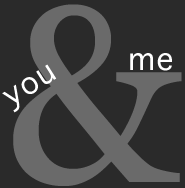I’m in the initial design stage of one project and in the final review/revision cycle of another so I’ve been thinking about project rhythms a lot lately. Here’s what it sounds like in my head:
- The beginning of a project needs a generous amount of calendar time at the beginning. If you’ve estimated 8 hours for design, don’t think you’re going to start at 9 am and be wrapped up at 5 pm. If you have estimated a week, don’t schedule that to begin Monday morning and be completed Friday afternoon. The earlier you are in a project, the more elapsed time you want to build into the schedule.
Time to look at other books as well as non-book sources of design inspirations. Time to walk away when you’re stuck—or even when you think you’ve nailed it. Time to look at it with fresh eyes another day. [And from a profitability perspective, you are likely doing this phase of the project for a fixed fee, so you want to use your time as productively as possible.]
- There will be at least two review cycles in the design phase. And the editor/publisher/client is most likely not on standby just waiting for you to present your ideas. Build in realistic calendar time for the review-revise-review again cycle.
- Before you actually begin production—this includes photos & memorabilia, other graphics, as well as page layout work—envision how the process will go when it’s really cookin’. Move slowly and thoughtfully as you set up your forms, style sheets, templates, and systems. Make sure they really support your work so you can fly through the production phases.
With initial design, and even sometimes the workflow setup, I often need a significant block of uninterrupted time because it will take me a while to submerge myself in the problem. [The image I have is of jumping rope in grade school. Before I jumped in I would stand on the side and feel the rhythm of the rope.]
- Then, with a solid—and signed-off—design and a well-thought out workflow I can fly through the production phase. I can work for hours and sometimes have to force myself to take a break. It’s also the kind of work I can dip into for a couple of hours at a time and make some serious progress. That’s because I don’t have to figure things out; I just have to execute my plan. It’s also the most productive—i.e., profitable—phase of the project cycle.
- At the end of a project—moving into the final review before signing off—there’s often significant pressure to move quickly and sidestep or jerry-rig the carefully thought out workflow and procedures. We’re behind and we have to get this done in time for Christmas, Mother’s Day, graduation, the party—insert important occasion here! On top of the external pressure, I’m tired. I’m grumpy, and I’m possibly a little miffed that I’m not making as good a profit on this project as I had hoped. [Much more on this over the coming months.] So I disregard my carefully thought-out systems and procedures. [It’s true, dear reader. On more than one occasion, no less.] I always regret it. This is exactly the time I need to slow down and pay close attention to what I are doing so I don’t introduce even more errors.
- The back and forth of final review/revision/review again is not going to happen in the span of a few hours. Everyone involved should have quality time with what we hope is the final layout before being handed off to the printer. Don’t rush it!
So, here’s the Cliff Notes version of this post:
- build in a good cushion of calendar time in the design phase and at end of the page layout stage—the final review cycles,
- then go like a cheetah in the middle, turning out enhanced photos and composed pages lickety-split.
Some related posts that might be of interest:
five workflow stumbling blocks that can trip you up
And while this isn’t technically a post, you might be interested in attending my free teleconference for May: Q&A on Print Design & Production










